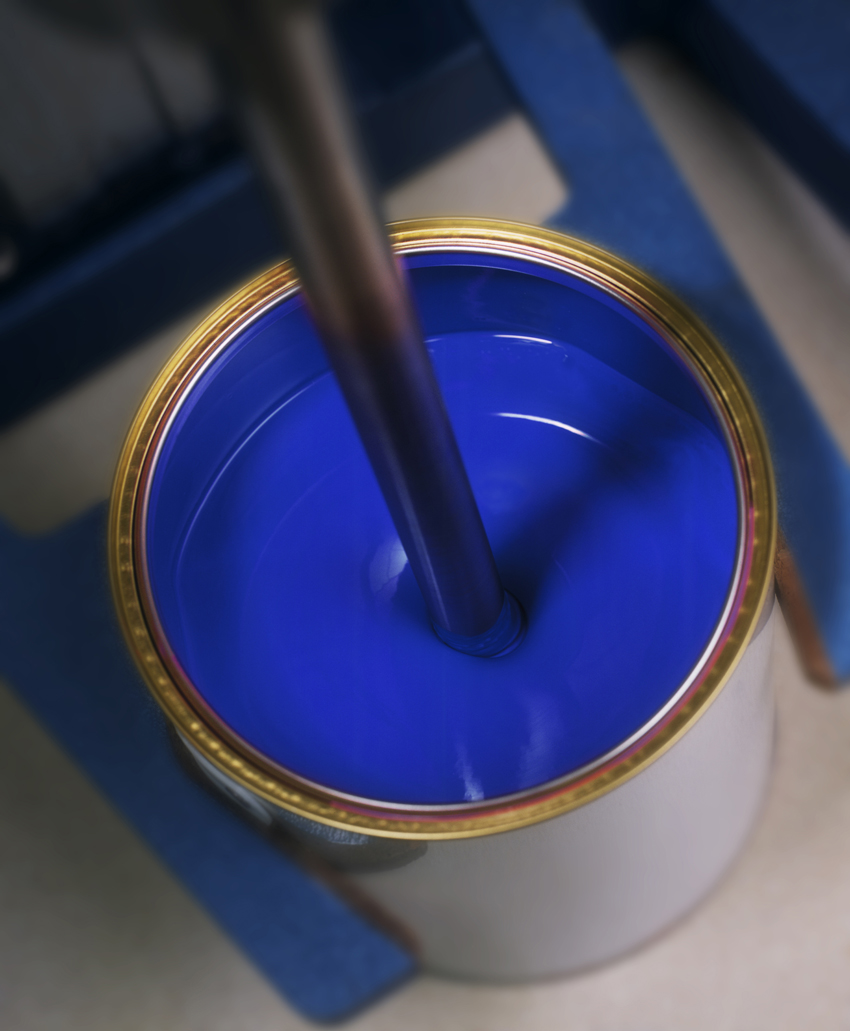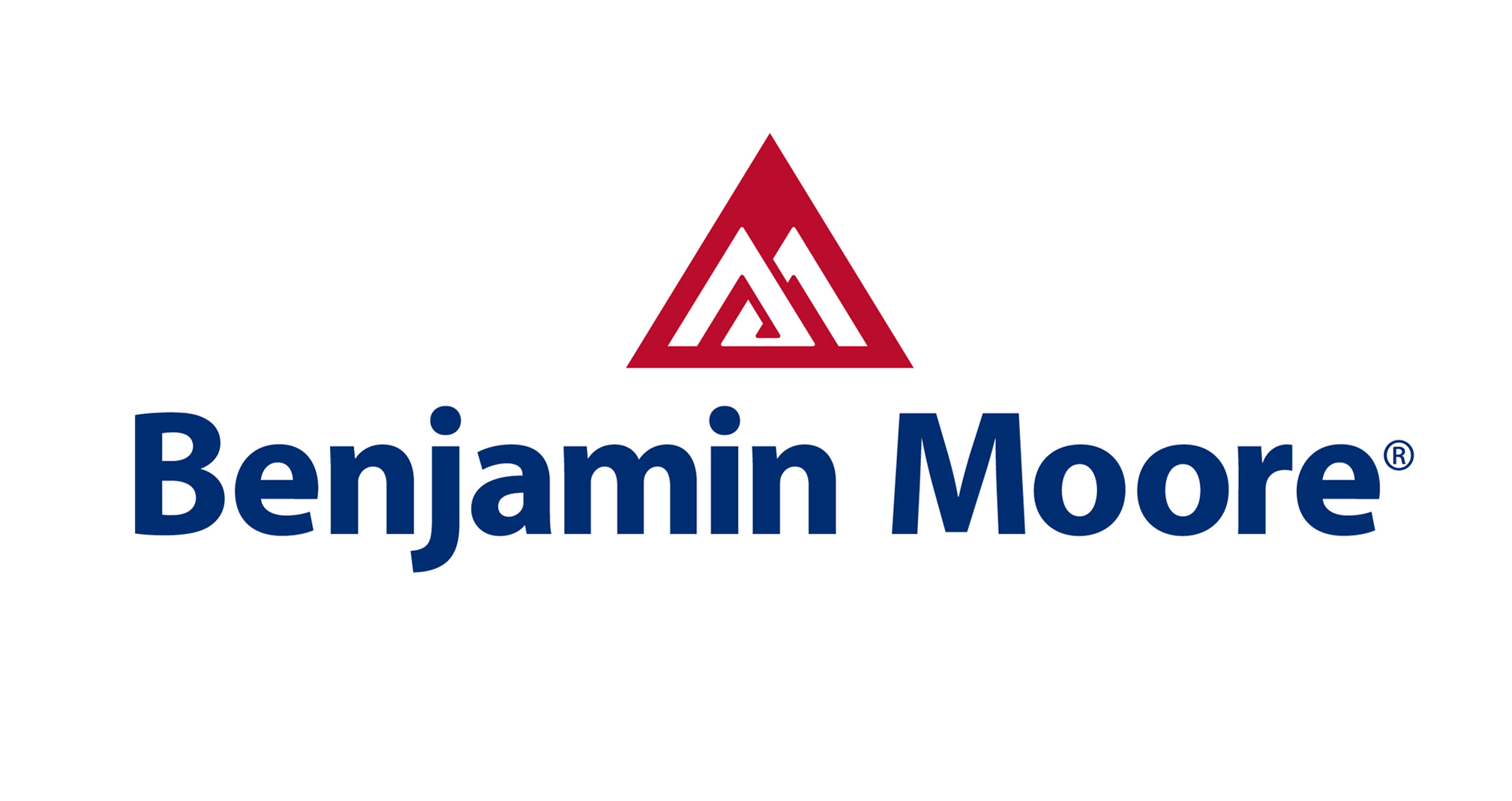Sustainability and Green Design
Maintaining Architectural Business Integrity by Ensuring Product Integrity On-site
As green building requirements increase, specifying products from trusted manufacturers becomes even more important for the health, safety, and welfare of occupants, and to earn LEED v4 credits. However, there are times when contractors swap out the specified product for something from another manufacturer, either because of cost or availability. While this may be easier to address on smaller projects, with larger construction projects, the ramifications can be vast. This section will focus on positive ways that architects can make sure that the products they specify are the products used for the project.

Photo courtesy of Benjamin Moore & Co.
Paint colors from different manufacturers may look similar, but it’s important to know why a certain product has been specified.
Much has changed over the past several decades regarding architectural products, especially in the green building industry. The shift from natural raw materials such as wood, brick, and stone to more manufactured products changed the knowledge base for architects. Where previously architects needed to know the qualities and properties of a natural material, they are now being asked to know the chemical ingredients of manufactured materials as well as the potential health impacts. That’s a lot to juggle, especially when it comes to making informed choices about sustainable products and building occupant health.
While in some cases, a simple product swap might not make a difference, in others, using a product from a different manufacturer can impact the overall project. Consider this situation: an architect specifies a low-VOC paint engineered to resists scuffs and marks in high-traffic areas that is tinted with advanced zero waterborne colorants. The paint is needed for a large-scale residential project with multiple units, and one of the design requirements is to reduce maintenance time through longevity of the paint product. If, on the building site, a contractor swaps out the same color paint from a different manufacturer, both the durability and VOC levels may be compromised from that which was originally specified.
For a large-scale project, this can be a problem, especially if a design goal is to address sustainability through low maintenance. While repainting a single-family home or a small-scale project more frequently than originally anticipated may not be ideal, the same situation on a multi-unit, multi-floor project can result in high, unexpected maintenance costs.
The question is, then, what can an architect do to ensure that the contractor on the job uses products from a trusted manufacturer? A good place to start in answering this question is to understand the types of specifications an architect can use in a project. As you know, specifications are written documents that describe and explain the materials and workmanship requirements for a project. Good practice is to read them along with other contract documentation.
Specifications vary depending on the design and development stage. The three most common types of building construction specifications in commercial projects are performance, prescriptive, and proprietary. Specific project needs will dictate which specification is required.
To go back to our question about how an architect can ensure that a specific product is used on-site, the answer is that if the project has certain requirements, whether for performance or sustainability or health and safety, the architect can use a proprietary specification. In most cases, architects use a proprietary specification as a way to avoid liability in the event that another product is substituted (and then either fails or fails to work as well as the specified product).

Photo courtesy of Benjamin Moore & Co.
Clear communication between the architect and contractor is key to ensuring that the sustainability goals of a project are met through product specification.
Another problem that can arise is that sometimes specifications state that a product “or equal” can be used. Typically, those alternative products are less expensive, and so contractors may include it in the bid. However, if the alternative product is not accepted, the contractor is required to opt for the specified product.
If we go back to the example of high-performing paints, we can see how swapping out an “or equal” product for something specified can be a problem. Different paint manufacturers have different ingredients and formulation processes to meet their specific performance goals.
There may be several implications for swapping out paint from one manufacturer for that from another that is considered “equal.” First, the specified product may have been chosen because it meets green building requirements or contributes toward LEED v4 credits. If an alternative product is used—even if considered “equal”—it may jeopardize credit eligibility in multiple categories. For example, if the product specified meets the requirement in two categories, such as Indoor Environmental Quality and Materials and Resources, and the contractor substitutes the product with a comparable product that only meets one of the categories, this could result in credits not earned.
Another possible implication is that an alternative paint product may not share the specified product’s exact durability attributes. For example, it may not resist scuffs and marks or be easy to clean. In a commercial project that factored in reduced maintenance and long-lasting protection of the various surfaces, a seemingly small change could amount to an increase in maintenance cost.
One strategy an architect can take is to make sure the contractor understands the owner’s expectations on the design project and specify accordingly. If the project requires a product from a specific manufacturer—that is, a proprietary specification—the architect can share the details with the general contractor about why that specific product—and not an “equal” product—is required. Clear communication in this case can help ensure that the project’s sustainability and other design goals are met.
Conclusion
Sustainability and green design are becoming important aspect of good business practice within the building industry. Companies that commit to a holistic approach to environmental sustainability—an approach that permeates not only their manufacturing process and products but also the corporate culture and local ecosystem—often provide best-in-class materials and products. This attention to detail and commitment to the environment, health, and safety can be transferred to architects and building professionals who specify those quality products, which in turn enhance the sustainable aspect of their projects.
Tools such as HPDs and EPDs along with Declare labels help architects and designers sort through the many available products when it comes to specifying for a project. In addition, certification programs such as WELL Building Standard, Living Building Challenge, and LEED v4 all help building professionals quantify their sustainable contributions to their work.
Sustainable and green design can be achieved in many different ways, including emphasizing reduced maintenance and building longevity through thoughtful product specification of paints and coatings. Specifying paints that are engineered to resist scuffs, fend off corrosion and abrasion, withstand temperature extremes, and protect against ultraviolet exposure and moisture are ways to protect surfaces from daily wear and tear, all while making them durable and easy to clean.
Given the number of different products on the market today, architects and designers do need to remain vigilant on the job site to ensure that when they specify a product and color from a trusted manufacturer, the contractors do not swap out the color with a similar product by a different manufacturer. Similar products from different manufacturers are by no means “equal.” One manufacturer may have a unique formula that combines environmentally friendly ingredients with product longevity, but another may lack one or each of the desired qualities.
END NOTES
1Eng, Tom.“Could the Chinese National Sword Inspire Global Recycling Innovation?.” TOMRA. 6 July 2018. Web 28 March 2019.
2Kaplaw, Stewart. “EPDs are Among the Hottest Topic in Green Building.” Green Building Law Update: Environmental Law and Sustainability for Business. 16 March 2014. Web. 26 March 2019:










